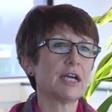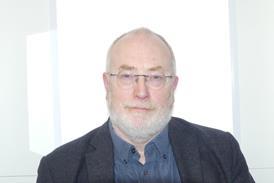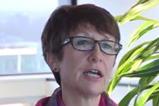Naomi Chambers discusses the obervations and findings of a study which examined 43 NHS board meetings in England and Wales
Well led or well observed?
Late last year, a cohort of senior healthcare scientists on a leadership programme carried out 43 different observations of NHS board meetings across England and Wales.
The findings of these scientists confirm concerns expressed elsewhere with regard to variations in the quality of board leadership. The observers were well aware that these were meetings held in public rather than public meetings, and what that difference implied.
Personal experiences
What was their experience?
Although most attended the board meeting of the hospital where they worked, some reported that they felt like tourists visiting another country, as the discourses were so different from their day-to-day encounters.
There was palpable shock about the lack of ethnic and age diversity. Whilst understanding the reasons for smaller boards, there was also disappointment that the healthcare scientists did not seem to be represented, nor their interests.
There was palpable shock about the lack of ethnic and age diversity… there was also disappointment that the healthcare scientists did not seem to be represented, nor their interests
Nevertheless, there were a number of great examples of the chair or the CEO making the visitors feel welcome:
As soon as I walked through the door I was welcomed by the chair… Before the meeting started, he asked everyone to introduce themselves… I thought this was excellent engagement. Having been a bit despondent at work of late due to many ongoing pressures, this board meeting was clearly the remedy, because it gave me a massive boost of enthusiasm and pride to work at this trust.
Just as common, however, was a situation where it was difficult to work out who the board members were. On occasion, the layout of the room didn’t allow attendees to follow the debate and discussion easily.
Public interest was often low: “There wasn’t much seating allocated for members of the public, which gave the impression that not many were expected to attend.”
Observations
What did the scientists note from the content and style of the meeting?
On the positive side, recognition of staff achievements was heartening. Patient stories also worked well to set the right tone. Many meetings had a clear structure and very skillful chairing was reported. CEO leadership was often noted to be impressive.
Mergers, restructuring, high demand especially over winter, financial problems and workforce shortages were some of the pressures driving many decisions, and a spirit of openness about sharing the difficulties during a time of multiple uncertainties was noted.
Some were also impressed by the scrutiny from the non-executive directors, including their ability to spot analytical errors in the data presented, and their skill in challenging the executive directors on some of their proposed plans.
One spotted that the content of the meeting was not dissimilar from the agenda of their own weekly departmental meetings. This gave comfort that there was a good line of sight from the board to matters of concern to departments, and to the performance of specific services.
Some were also impressed by the scrutiny from the non-executive directors, including… their skill in challenging the executive directors on some of their proposed plans
But many of the observers were struck by the apparent lack of decision-making; instead, facts were presented and proposed future plans were outlined, with often a lack of measurable outcomes from the meeting.
One observer wrote: ‘… the meeting focused mainly on problems within the hospital but with very little focus on potential solutions… numbers, trends or percentages were not mentioned at any point…’
As a leadership performance, whilst some were assessed as expertly and energetically run with a firm guiding hand, other meetings were experienced as devoid of energy, passion and ambition. In a few others, there was a degree of self-congratulation.
This landed badly for staff observing the meeting whose day-to-day experience was different from the reports given to the board. There was often a lack of engagement with staff and public in the room. One scientist described the atmosphere as like an echo chamber.
Learnings
What can NHS boards and regulatory bodies learn from these insights?
For this group of NHS staff, who came to the task with few prior expectations but a strong analytical mind, the experience provoked very positive, and on occasion, very negative reactions. Their observations could yield really valuable learning.
So, the first message for boards is: next time you encounter a member of staff carrying out an observation of your meeting, invite them to share their findings in writing (less scary for them than asking for verbal feedback) and then suggest a follow-up meeting – this is staff engagement in action, and free-of-charge consultancy.
Next time you encounter a member of staff carrying out an observation of your meeting, invite them to share their findings in writing
Second, these observations indicate that more needs to be done to understand the impact of the everyday enactment of leadership. We know the importance of behaviours in shaping organisation culture. Has the NHS grasped the significance of the micro-performances of leadership?
Third, is it time to think again about the composition of NHS boards? A cross-party group of MPs has recently called for greater professional diversity in senior leadership in the NHS to promote greater creative thinking.
The scripts of these observers indicate their readiness and competence to take up these positions.
































1 Readers' comment